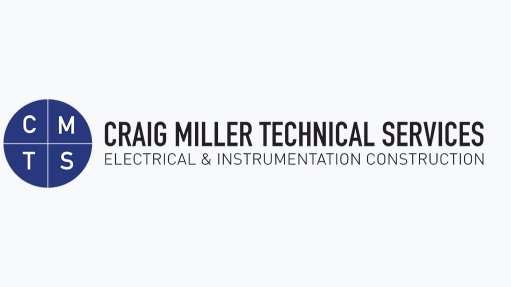In-cab signalling needed in Africa
Local investor in new rolling stock and track infrastructure projects, and rail solutions provider Traxtion CEO James Holley and solutions provider Gear Rail CEO Roelf C Alberts suggest the “speedy implementation of in-cab signalling on Africa’s railroads” to improve safety on African railways.
In-cab signalling is a critical system for ground vehicle communication on electrified railways, which has been successfully deployed in Europe, Asia, some parts of Africa and the US. On rail lines across the world the 270-year-old signalling system is being replaced by this simple piece of modern technology, making trains safer, more efficient and cost effective.
Instead of relying on trackside signals and a paper-based system, in-cab signalling works by constantly supervising the speed and controlling the limits of movement of trains through an on-train computer. Further, it offers enhanced safety and operational efficiencies by providing the train driver with track authority onboard the locomotive, with the major benefit being automatic brake enforcement to prevent movement authority breaches and speed violations.
In-cab signalling, which can be deployed across regional, urban, suburban and high-volume freight corridors, ensures that the onboard systems will continuously monitor performance and ensure that train drivers adhere to speed profiles and authorities. Its tools can also be integrated seamlessly with train planning and optimisation tools to ensure that train controllers can dynamically plan and react to schedule requirements to meet business goals.
One of the important benefits of in-cab signalling is that it allows for the continuous movement of trains without stopping at each station and intersection. Trains receive authorities dynamically and will schedule trains according to the next passing loop without waiting hours for opposing trains when they are delayed.
For operators, this solution allows trains to run closer together, which significantly reduces transit times, and improves the safety while reducing the risks. The reduction of transit times is fundamental to delivering cost- effective rail solutions to customers.
In-cab signalling requires fewer traditional trackside signalling systems which are costly to maintain and can be susceptible to vandalism or theft on regional lines where security may not be as effective.
Traxtion is a joint venture partner in Calabash, which operates as a third-party operator on the TAZARA line between Tanzania and Zambia and is busy motivating the introduction of in-cab signalling regionally. Traxtion believes that, through the introduction of in-cab signalling, transit times can be reduced by as much as 40%.
However, implementing a complete in-cab signalling philosophy in a railway requires significant planning before execution, to ensure that the investment made is aligned with the respective railway’s business processes and overall long-term strategy.
Research Outcomes
Research has already shown that the deployment of in-cab signalling has led to improved turnaround times by reducing the time required for train crews to receive and process track warrants.
The onboard computer can provide real-time information to train crews about speed limits, track conditions, and other critical information to ensure safe and efficient train movements, thereby preventing derailments through in-cab signalling, proper maintenance and safety measures, which is crucial to minimising the potential costs associated with these incidents.
Reducing the risks and the costs associated with accidents is a significant advantage for railways. The cost of a rail derailment can be significant, both in terms of financial losses and human casualties. The direct costs can include damage to the train, tracks, and surrounding infrastructure, as well as the cost of clean-up and any necessary repairs.
Article Enquiry
Email Article
Save Article
Feedback
To advertise email advertising@creamermedia.co.za or click here
Comments
Press Office
Announcements
What's On
Subscribe to improve your user experience...
Option 1 (equivalent of R125 a month):
Receive a weekly copy of Creamer Media's Engineering News & Mining Weekly magazine
(print copy for those in South Africa and e-magazine for those outside of South Africa)
Receive daily email newsletters
Access to full search results
Access archive of magazine back copies
Access to Projects in Progress
Access to ONE Research Report of your choice in PDF format
Option 2 (equivalent of R375 a month):
All benefits from Option 1
PLUS
Access to Creamer Media's Research Channel Africa for ALL Research Reports, in PDF format, on various industrial and mining sectors
including Electricity; Water; Energy Transition; Hydrogen; Roads, Rail and Ports; Coal; Gold; Platinum; Battery Metals; etc.
Already a subscriber?
Forgotten your password?
Receive weekly copy of Creamer Media's Engineering News & Mining Weekly magazine (print copy for those in South Africa and e-magazine for those outside of South Africa)
➕
Recieve daily email newsletters
➕
Access to full search results
➕
Access archive of magazine back copies
➕
Access to Projects in Progress
➕
Access to ONE Research Report of your choice in PDF format
RESEARCH CHANNEL AFRICA
R4500 (equivalent of R375 a month)
SUBSCRIBEAll benefits from Option 1
➕
Access to Creamer Media's Research Channel Africa for ALL Research Reports on various industrial and mining sectors, in PDF format, including on:
Electricity
➕
Water
➕
Energy Transition
➕
Hydrogen
➕
Roads, Rail and Ports
➕
Coal
➕
Gold
➕
Platinum
➕
Battery Metals
➕
etc.
Receive all benefits from Option 1 or Option 2 delivered to numerous people at your company
➕
Multiple User names and Passwords for simultaneous log-ins
➕
Intranet integration access to all in your organisation


















